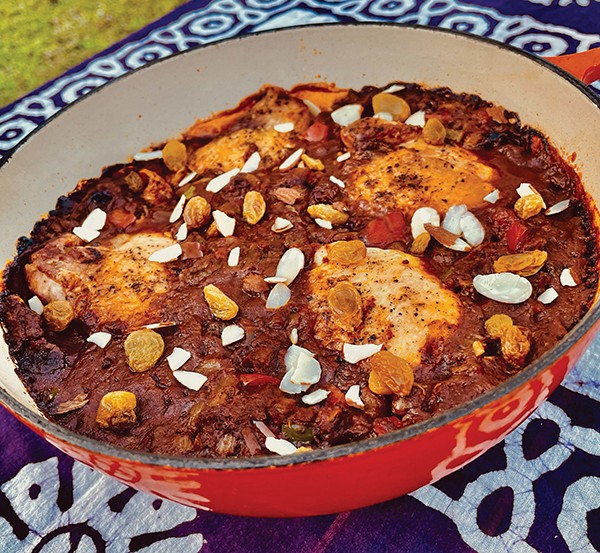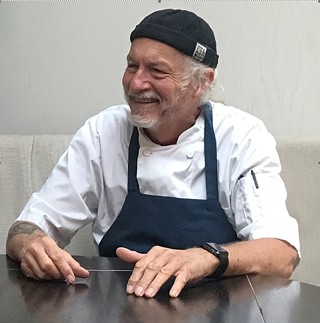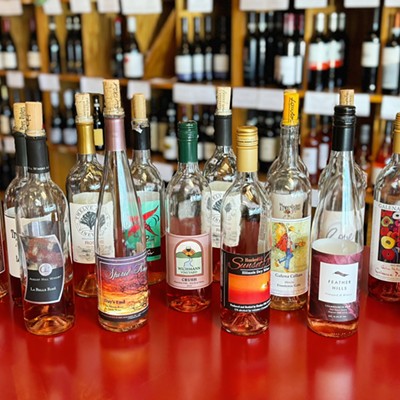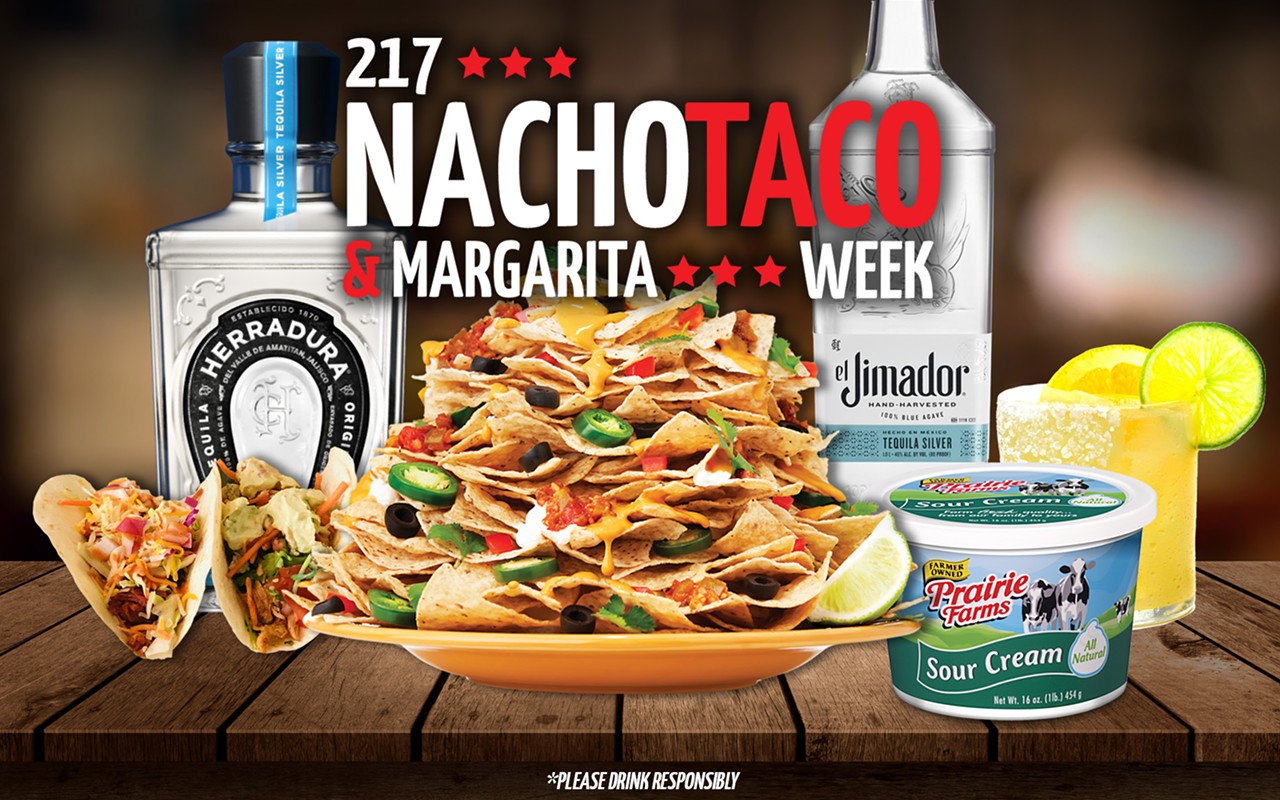My favorite scene from Christopher Guest's 1997 mockumentary Waiting for Guffman, is Eugene Levy talking to friends over dinner at an old-school Chinese restaurant in rural Missouri. "We have friends Barbara and Bruce who went to China. They went to Peking, where they make the ducks, and what they say is that the food over there is not as good. You can't get a sauce as thick and sweet over there. They don't make it like that. Everything's steamed or something."
Cultural appropriation – the adoption of elements of one culture by members of another culture – has become a controversial topic in the food world. An essay on food52.com suggests that it is an example of exploitation and modern-day colonialism "when a non-Chinese person opens up a Chinese restaurant, staffs it with non-Chinese people, and benefits from it economically." The popular fast food chain Shake Shack recently came under criticism when it started selling "Korean-style" fried chicken sandwiches with white kimchi slaw and fries with gochugang sauce. I just had to roll my eyes and shake my head when I first came upon Sriracha Gouda cheese at my local convenience store-gas station.
A recipe can either be a rigid formula or an adaptable concept. As a recipe travels through time, it mutates, and often bears little resemblance to the original. Few recipes have pure bloodlines; most are modifications of a recipe that came before. Immigrants recreate the foods of their homeland using local ingredients. Non-immigrants adapt "ethnic" cuisines to suit their own palates.
Country captain chicken is a traditional chicken recipe from the Low Country region of the American South. It is a mildly spicy dish consisting of chicken parts braised in a Creole-like sauce of onions, garlic, bell peppers and tomatoes, but with the exotic addition of curry powder. Country captain chicken is served with rice (a non-indigenous crop brought over from Africa with the slave trade) and is often served with garnishes on the side, allowing each person to customize the dish according to personal preference. Garnishes can include raisins or currants, toasted coconut, green onions, slivered almonds, crumbled bacon and chutneys.
The genealogy of country captain chicken reads like a script from Henry Louis Gates' PBS show Finding Your Roots. It is believed that the dish originated in the Indian subcontinent during the 18th century as a chicken curry prepared by Indian cooks for English officials during the British Raj, the colonial period when Great Britain ruled India. The dish traveled with returning sailors back to England and then across the Atlantic to the seaports of Charleston and Savannah.
Country captain chicken became a popular dish in home kitchens throughout the American South. Recipes appeared in Junior League cookbooks and in the influential Joy of Cooking. It was Franklin Delano Roosevelt's favorite meal when he traveled by train to his "Little White House" in Warm Springs, Georgia. At nearby Fort Benning, country captain chicken became General George Patton's most requested meal. It soon became a popular entertaining dish for military wives because it could be prepared ahead of time and kept warm, giving the hostesses time to socialize with their guests. Military families have to move frequently and the recipe for country captain chicken traveled with them to new military bases across the country.
Blended, pre-made curry powder is a British invention and a byproduct of colonialism and an example of cultural appropriation. The store-bought curry powder that seasoned the dishes enjoyed by white southerners in America, bears little resemblance to its Indian progenitor, more appropriately called a masala.
Country captain chicken revisits its Indian roots in this recipe from Atlanta's Asha Gomez. Asha was born in India and grew up in the United States. She has authored two cookbooks with recipes that reflect the cultures of both her native southern India and adopted southern America. In her interpretation of country captain chicken, she takes a traditional southern dish back to its roots by replacing commercial curry powder with a more authentic spice mixture known as garam masala. Garam masala, which translates as "hot spice mixture," is a broad category of ground spice mixtures and many geographical variations exist throughout the Indian subcontinent.
Country captain chicken
Recipe used with permission from Asha Gomez
I prefer to use bone-in, skin-on chicken thighs. If you can't find dried currants, you can substitute raisins.
Ingredients
1 (3- to 4-lb.) whole chicken, cut into 8 pieces
3 ½ teaspoons kosher salt, divided
1 ½ teaspoons freshly ground black pepper, divided
¼ cup vegetable oil
1 large yellow onion, chopped
4 celery ribs, chopped
1 red bell pepper, chopped
1 green bell pepper, chopped
6 garlic cloves, finely chopped
1 (1-inch) piece fresh ginger, finely chopped
cup dried currants, divided
2 tablespoons garam masala
1 tablespoon ground coriander
1 tablespoon paprika
1 teaspoon ground turmeric
1 (14.5-oz.) can whole, peeled tomatoes, chopped
1 tablespoon tomato paste
2 tablespoons cane syrup
cup slivered almonds
Cooked white long-grain rice
Preparation
Sprinkle chicken with 1 ½ teaspoons of salt and 1 teaspoon of black pepper. Cook the chicken, skin side down, in hot oil in a 5-qt. Dutch oven over medium heat, turning once or twice, about 10 minutes or until golden brown. Transfer chicken pieces to a platter, reserving 2 tablespoons of drippings in Dutch oven.
Cook the chopped yellow onion, celery, bell peppers, garlic, ginger and 1/3 cup dried currants in hot drippings over medium heat, stirring occasionally, 8 to 10 minutes or until onions are tender.
Stir in the garam masala, coriander, paprika, turmeric and remaining 2 teaspoons of salt and 1/2 teaspoon of black pepper into onion mixture, and cook, stirring often, 3 to 4 minutes or until spices are toasted. Stir in tomatoes, tomato paste, and cane syrup. Cover and reduce heat to low.
Preheat oven to 350 degrees. Simmer mixture in Dutch oven over low heat, stirring occasionally, 25 minutes or until mixture thickens into a chunky sauce. Add chicken pieces, pressing gently to submerge in sauce; cover.
Bake at 350 degrees for about 1 hour or until chicken is tender. Sprinkle with almonds and remaining 1/3 cup currants. Serve chicken and sauce over hot cooked rice.
Peter sends greetings from Bertha Bus in sunny Florida. He's vaccinated and looking forward to being with y'all up North.


















